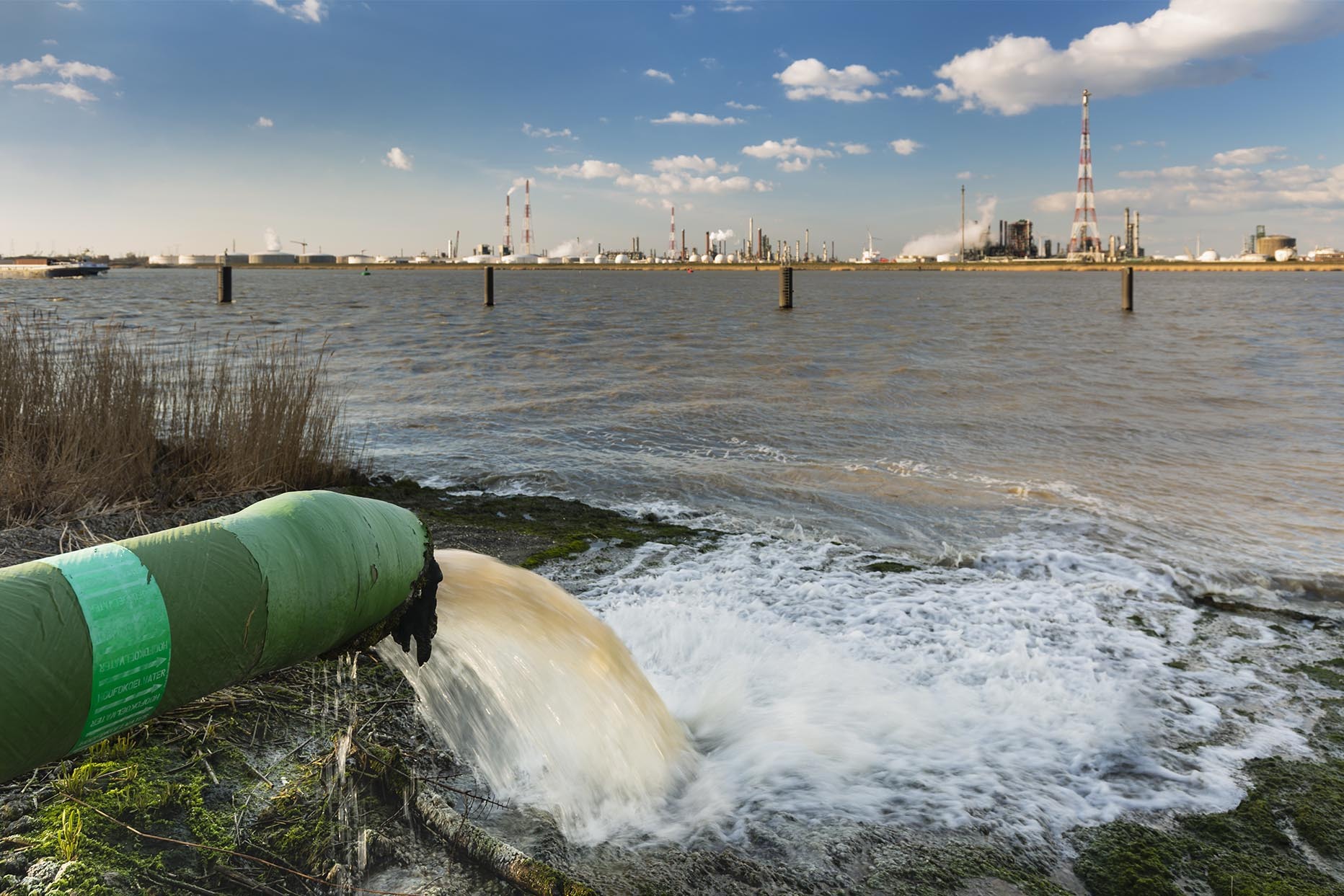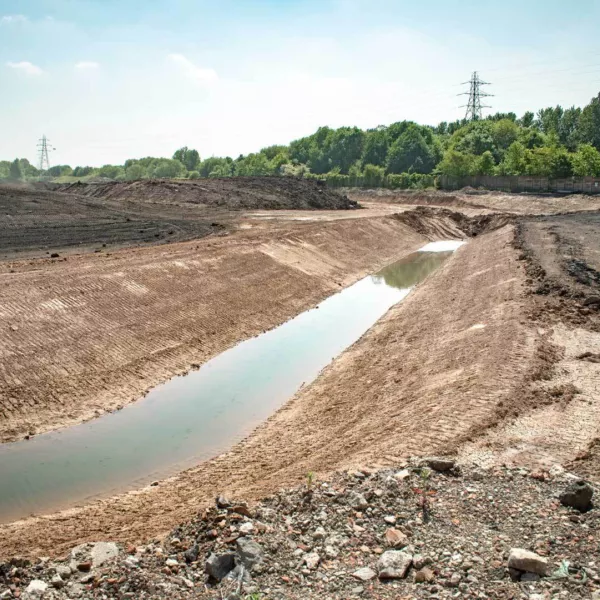Removing PAH from lake sediment
Across Europe, there are thousands of former industrial sites contaminated with now-controlled substances such as creosote. Soil and groundwater remediation projects are common at such locations. Where contaminants have leached into lake and riverbeds, this presents new challenges for environmental authorities and contractors. DESOTEC can supply mobile activated carbon filters to purify water from lake sediment, as we are doing for this public procurement project in Sweden.
The problem
A lake in central Sweden is situated next to an old industrial site used for treating railway sleepers and telegraph poles with creosote.
After industrial activity ceased several years ago, it was apparent that the soil was heavily polluted. Contaminants had also found their way into the lake and part of its tributary river.
The local environmental authorities therefore embarked upon a clean-up operation, beginning with a soil remediation phase of the industrial site itself, which is now complete.
The next stage is to treat the lake and riverbeds, which are contaminated with polycyclic aromatic hydrocarbons, also called PAHs, which are often found in creosote. These are harmful for the environment and human health, with some known to be carcinogenic.
The area to be treated is around 31 000 m² in size, containing an estimated 30 000 m³ of sediment.

The solution
The environmental authority arranged a pilot project in 2019. As activated carbon is considered the best available technology for such applications, DESOTEC was asked to supply a small MOBICON 1000 filter.
The pilot was successful, so the project was put out to tender among specialist dredging companies. Due to our proven track record, we were then subcontracted to carry out water treatment services.
The work entails the client dredging up sludge from the lake and river by boat and placing it in geo-tubes, which are large sacks made of textiles through which water can drain.
This water will collect in a basin, then be pumped through four DESOTEC filters placed in parallel to treat the average flow rate of 300 m³/h. A fifth filter is in reserve in case further treatment is needed. Once purified, the water will be discharged back to the lake.
In total, 100-150 000 m³ water will require treatment – around 40-60 Olympic-sized swimming pools.
Concentrations of PAH in the water that drains from the sludge are around 160 µg/L, and the aim is to reduce this as much as possible.
It is calculated that there are 9,5 tonnes of PAH in the lake, but most will remain in the sludge, which will be treated separately.
The results
The full-scale project got under way in the autumn of 2021 and is forecast to take around seven months, though stoppages are likely during the harshest winter weather.
The pilot test showed that our filter was able to reduce PAH by 99,3%, and we expect to replicate this throughout the project. As DESOTEC filters are mobile, they are easy to try out in situ, which provides more reliable results than lab tests and gives clients the confidence to go ahead with large-scale projects.
Based on the pilot test, our calculations show that it should not be necessary to exchange the filters, but we can do so if concentrations of PAH are unexpectedly high. Such flexibility is one of the key advantages of DESOTEC’s filters. The modular nature of our system also makes it simple to add or remove filters if necessary, without the client needing to make a major upfront investment.
DESOTEC also handles all waste, transporting spent carbon safely away from the site in closed filter units. It is taken to our facilities in Belgium, where it is analysed so that the right measures can be taken for handling it. All molecules that were adsorbed onto the carbon are desorbed inside DESOTEC’s reactivation furnaces and fully destroyed in line with national and European legislation by an incineration and neutralisation set-up. The entire installation and its emissions are continuously monitored online, guaranteeing that only harmless water vapour exits the chimneys.
Contact our experts
To discuss how our activated carbon filters could work for your land or groundwater remediation project, contact our team of engineers today.
Contact our expertsContact our experts
To discuss how our activated carbon filters could work for your land or groundwater remediation project, contact our team of engineers today.
Contact our experts-
Remediation Services
Mobile, temporary, full-service purification solutions for air, soil and groundwater, creating a cleaner world for future generations. -
Our unique service
Our closed-loop, full-service model is as unique as your business needs. We’ll define the right filtration setup and safely recycle filtration waste, making it easy to go green. -
Your sustainability journey
We care about protecting our air, water and soil for future generations, just like you. Our filtration solutions help you meet environmental standards, reducing your carbon footprint.


